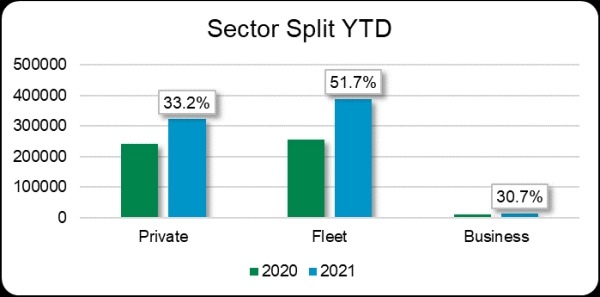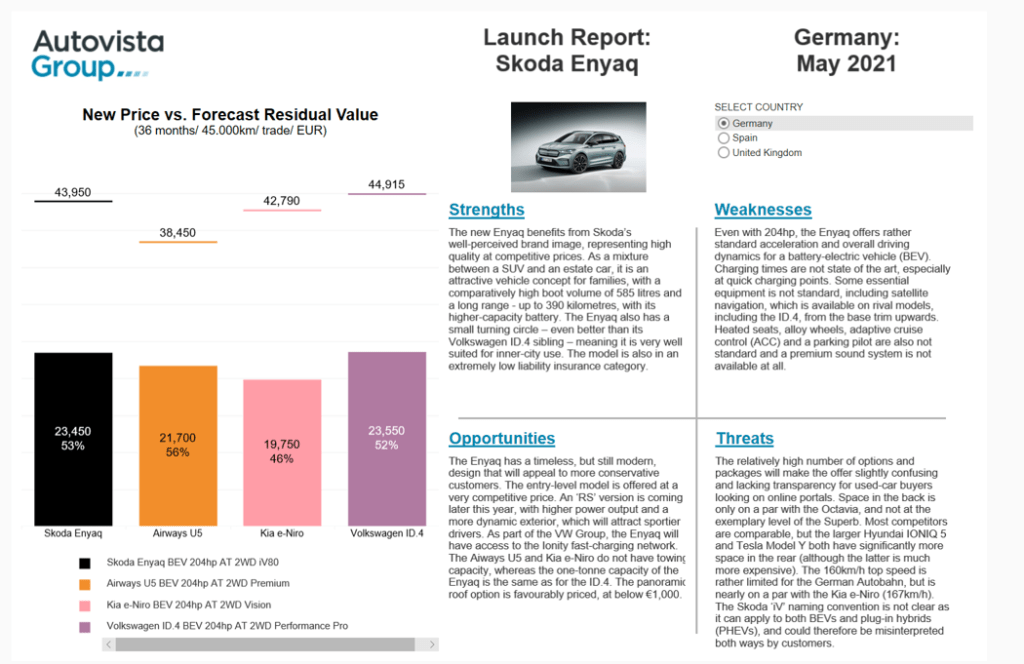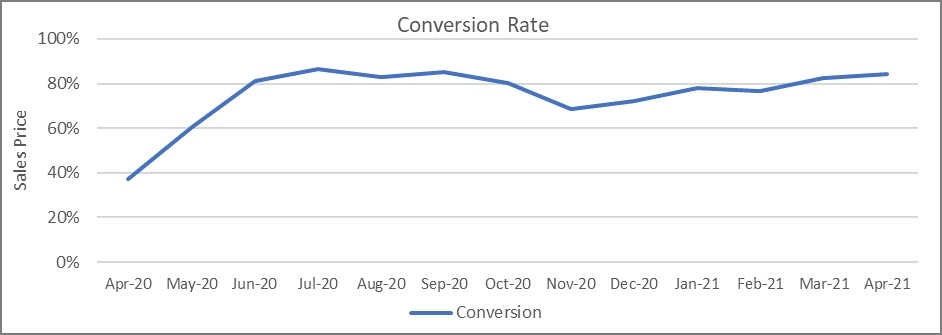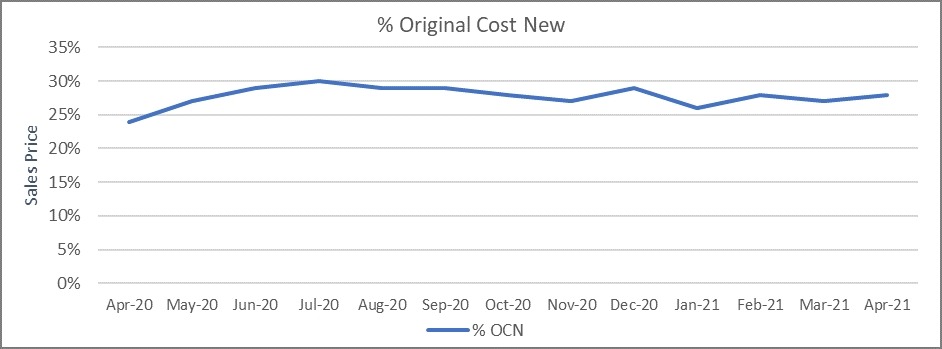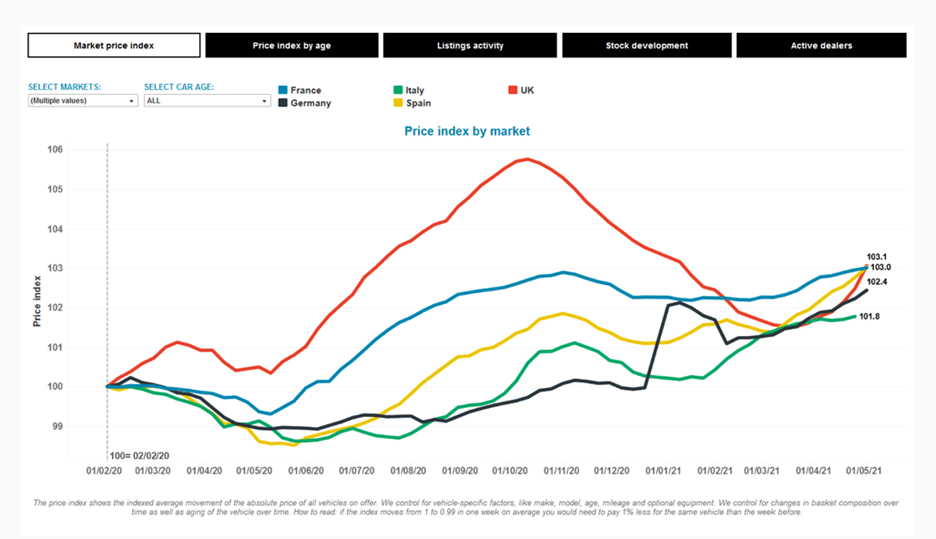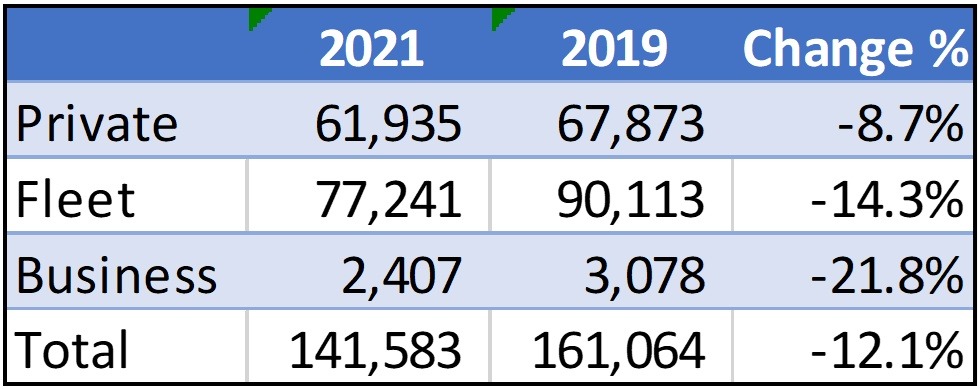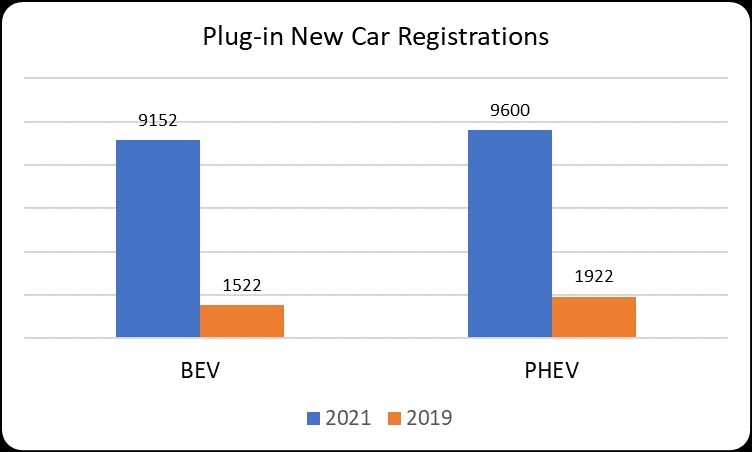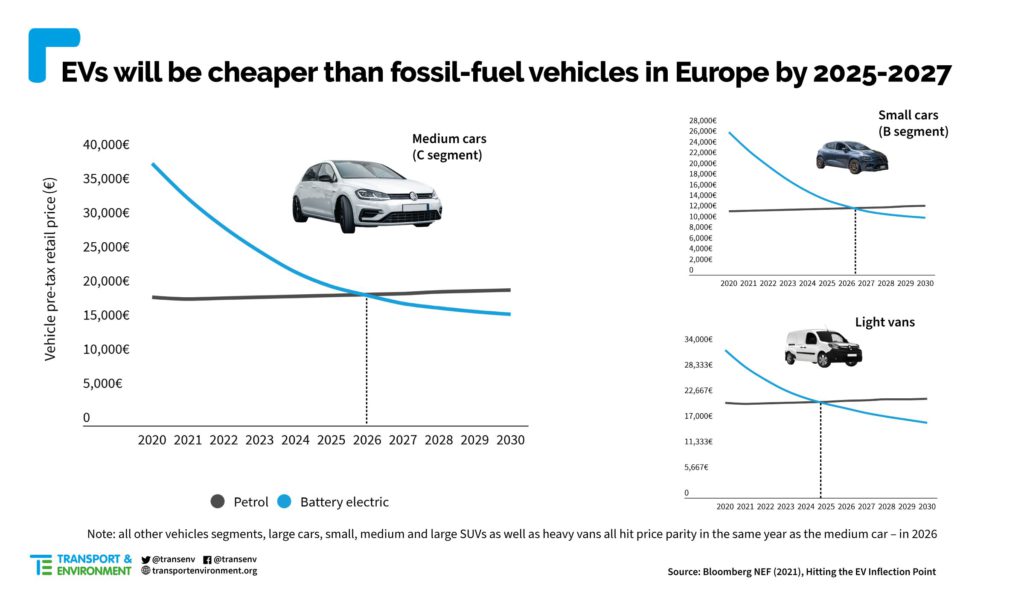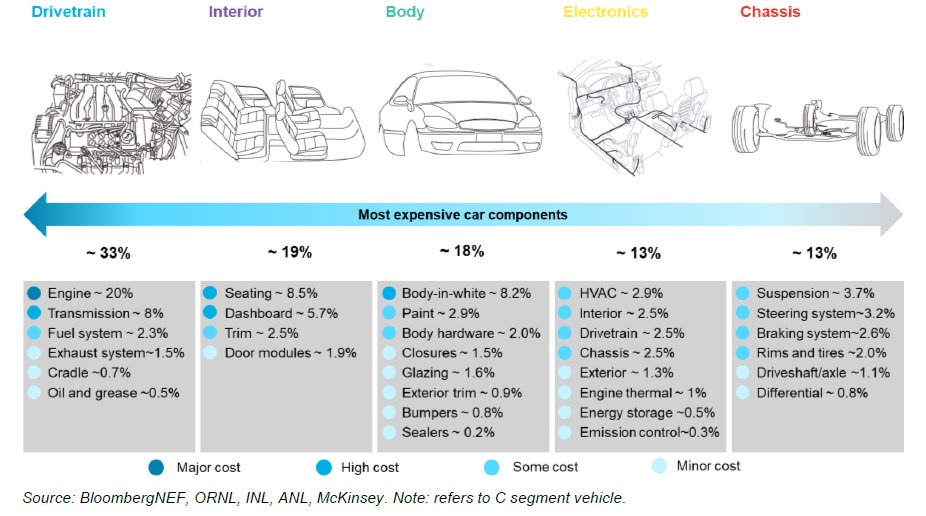With dealerships open again for two months following Lockdown-3, new car activity appears to be strengthening. Year-to-date registration volume now sits 42.5% ahead of last year according to data published by the Society of Motor Manufacturers and Traders (SMMT). Of course, April and May 2020 only produced around 24,500 registrations in total, so it is no great surprise to see such an uplift. Compared to this point in 2019 the market is down by almost 31%, so business has definitely not returned to normal yet.
Some of the shortfall will be due to the time it takes between ordering and delivery, for those consumers who waited to benefit from a physical sales process. Due to this time lag, potentially only a small proportion of cars ordered just after lockdown easing will have been delivered, although stock availability will also be having an effect. As we look ahead to quarter three of 2021, Glass’s expects stock supply issues to intensify, with the widely reported shortage of semiconductors adding to COVID-19 related delays and complications.
Auction hammer prices were strong throughout May but have strengthened further in June. This will likely lead to unprecedented rises in residual values as Glass’s reflects the spike in wholesale activity. In May the volume of cars that sold on the first time of asking at auction was 85.3%, which is the highest first-time conversion rate since July last year, which was at the height of the bounce-back that followed the end of Lockdown-1.
The strength in the UK wholesale market is underpinned by strong and consistent retail demand. Ordinarily, demand begins to slow in the summer months as consumers focus switches towards holidays. However, May and June’s exceptional activity shows little sign of slowing and could intensify as consumers reflect on the prospect of no overseas holidays this summer, with some choosing to use unexpected disposable income to change their car, which will be welcomed by both new and used car dealers.

 Close
Close